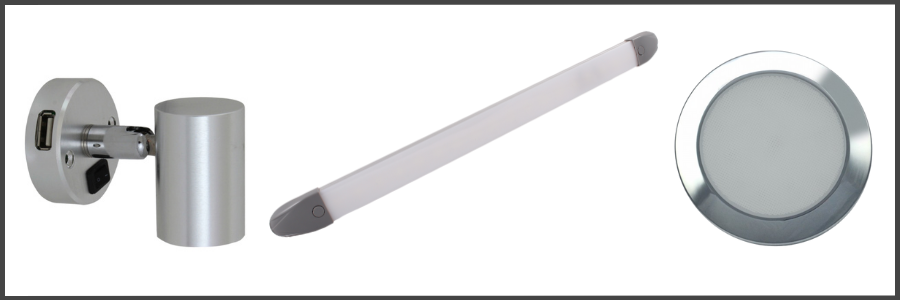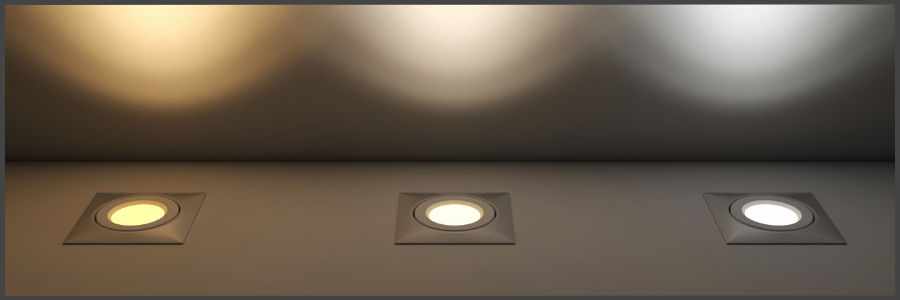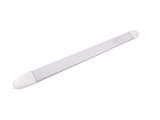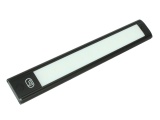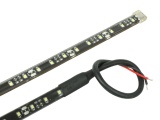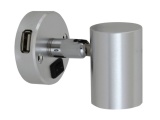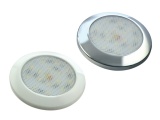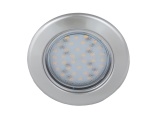Picking the right LED light27 January 2022 | Paul We often get asked by customers to recommend an LED light and this is actually quite a tricky job as there are so many to choose from and lots of considerations when assessing which one would be most suitable. Not only is it hard to judge what style of fitting the customer might like or need, but someone's sensitivity to light can differ greatly from one person to the next, so what we find bright another person may feel is dim. In this article, we'll take a look at some of the key things to consider when choosing the right LED light for your application. Style The first thing to consider is whether the style of the light fitting will suit your build, both functionally and aesthetically. Fittings come in various styles including ceiling light, strip light, wall/reading light, spot light etc. and it is important that it's functionally right for your application, but also that it looks good. Wall/reading lights are often used by beds or sitting areas whilst strip lights tend to be used beneath shelving or to illuminate work tops, and ceiling lights for general illumination of a living area. Style is one of the more important things to look at because it can have a big impact on how well the living space works for you and contributes to the 'feel' of your build, so take time to look at all the options before deciding.
Usage Where your light will be used is also a key consideration. If you intend to use it in bathroom areas, or even have it mounted outside where it is exposed to the elements, then you'll want it to have a degree of water resistance or be fully waterproof. Ensure you look at the specifications for the light to see how well protected it is. You'll often find an Ingress Protection (IP) rating in the specs and for full waterproofing you'll want a light that is rated to IP67. We would normally recommend IP67 rated lights for bathrooms because even though the light might not be directly subjected to water, the waterproofing will prevent humid air entering the light and affecting the circuitry. Installation considerations Light fittings generally come in two installation formats, either surface mounted or recess mounted. Surface mounted means that the entire body of the light sits on top of the surface it's being fixed to and there's no need to make a recess for the light body (although you will probably still need to drill a small hole to pass the cables through). The majority of lights are mounted in this way as it makes for a more simple installation and doesn't require any space behind the mounting surface. The downside is that they can appear slightly more bulky, although with the advent of compact LED technology there are now plenty of surface-mounted lights available that have a very low profile and look very discrete. Recess mounted (or simply , recessed) means that a hole needs to be cut out in the mounting surface that the body of the light will sit in, leaving just the face of the light visible. These require a bit more work to install as you need to cut a fairly substantial hole and ensure there's enough space behind the surface to accommodate the fitting, however, they often protrude only a few millimetres from the mounting surface so are very low profile with a more 'integrated' look. Again, LED technology has enabled the bodies of recessed lights to be very compact and you often won't need more than 15mm or so behind the mounting surface to fit them. Features Lights can come with a built-in switch, be touch-sensitive, movement-sensitive or even have a USB socket built-in. It's important to think about whether these will be a help or a hinderance. For example, would a built-in switch on each light be good? Probably not if you want all your lights on at the same time, in which case using lights that don't have individual switches and operating them as a group from a switch panel would be better. Would a built-in USB socket be good? For a reading light near a bed it might be ideal so you can charge your phone overnight. These types of features can make your lighting setup work really well for you or be a real pain to live with, depending on how you're going to use them, so think carefully about how these features will work in practice. Brightness This is always a tricky one as it can differ from person to person and from space to space. Lighter coloured areas won't require as much light and darker ones will require more, so it's worth keeping the colour scheme of the area in mind when looking into this. LED Light output is rated in lumens (the most useful version being 'effective' lumens) but this can be difficult to understand as we don't have a frame of reference. To help with this, a typical 60W bulb will produce between 700-800 effective lumens so this will provide a benchmark to help you in your choices. We've created a guide to help understand lumens which you can read more in-depth here
The number of lights required Again, this has a lot to do with the level of brightness you require & the size of your space. The style of light you choose will also play a part as a smaller light will typically produce fewer lumens, so you may require more of them for a given area. We always suggest buying one light first and testing it in the area you're looking to install it. This provides you with a chance to determine how much light it provides in the space and gives you a better idea of how many you'll need in total. It's always worth paying close attention to the light dimensions so you can make sure you'll have enough space to install the light. Light Colour There are two main types of light colour, Warm White and Cool White. Warm White is a more yellowy light that is commonly used in living spaces and sleeping areas. This light provides warmth to these areas and has a temperature 'colour' of around 2000-3000K (Kelvin). Cool White is more of a brilliant white light, is typically used in 'functional' areas such as bathrooms and kitchens and generally provides a higher lumens output than Warm White lights. This light is used to help see things more easily when carrying out tasks and has a colour temperature of around 4000K-6000K.
We hope you have found this article helpful in choosing the right LED light for your application. |
| |||||||||||||||||||||||||||||||||||
12 Volt PlanetAuto & Marine Electrical Components |
